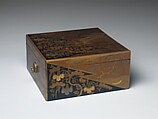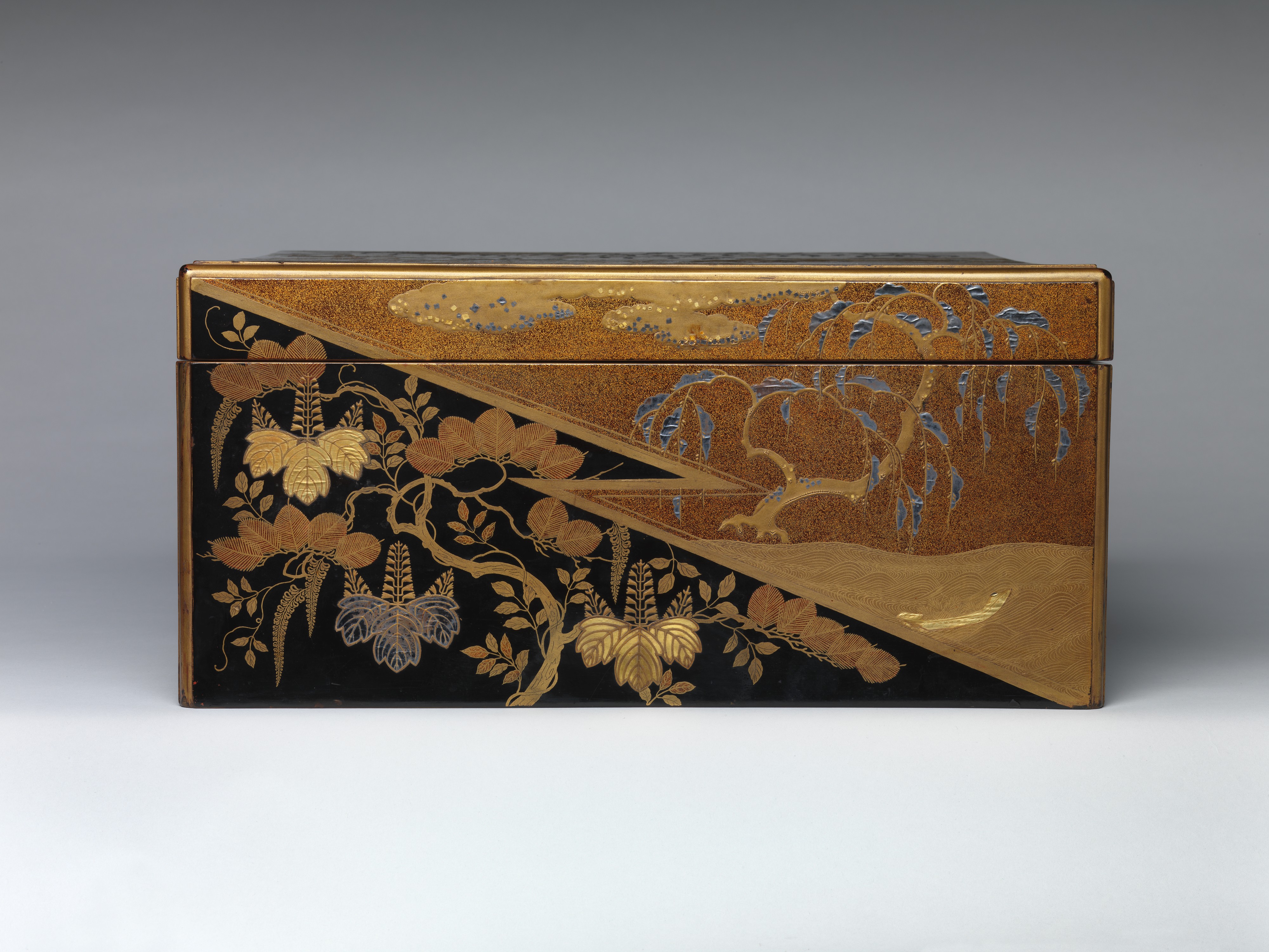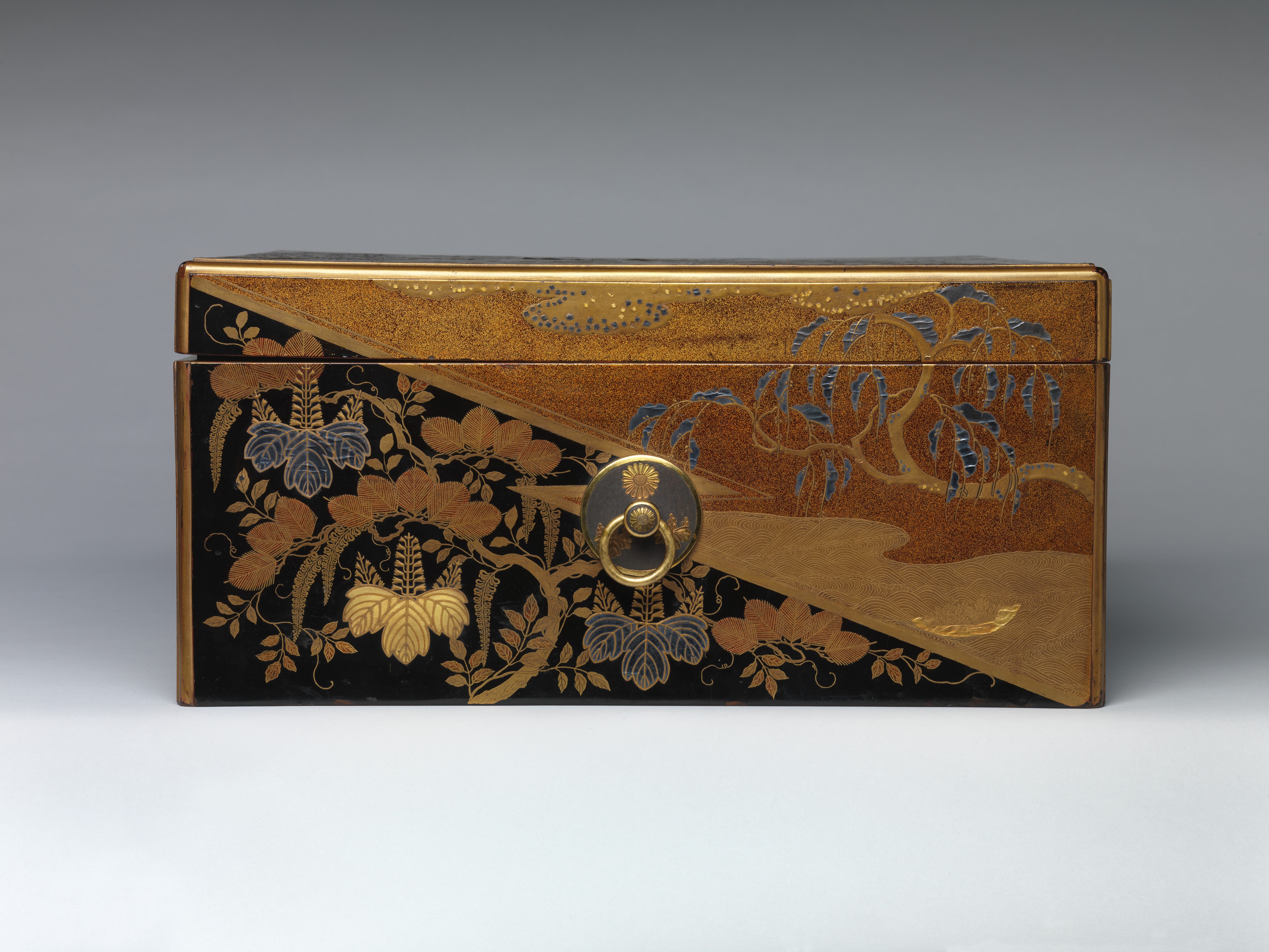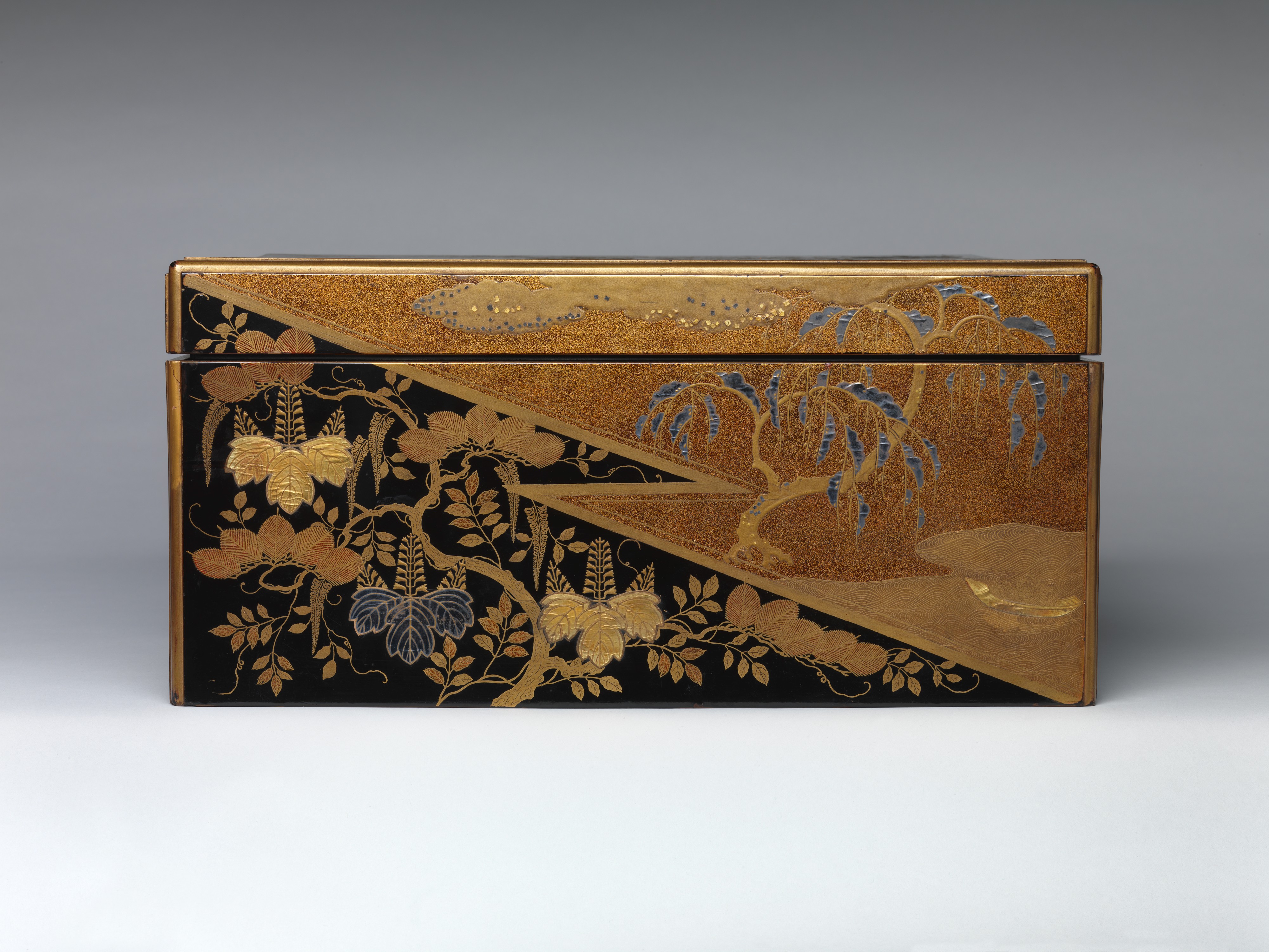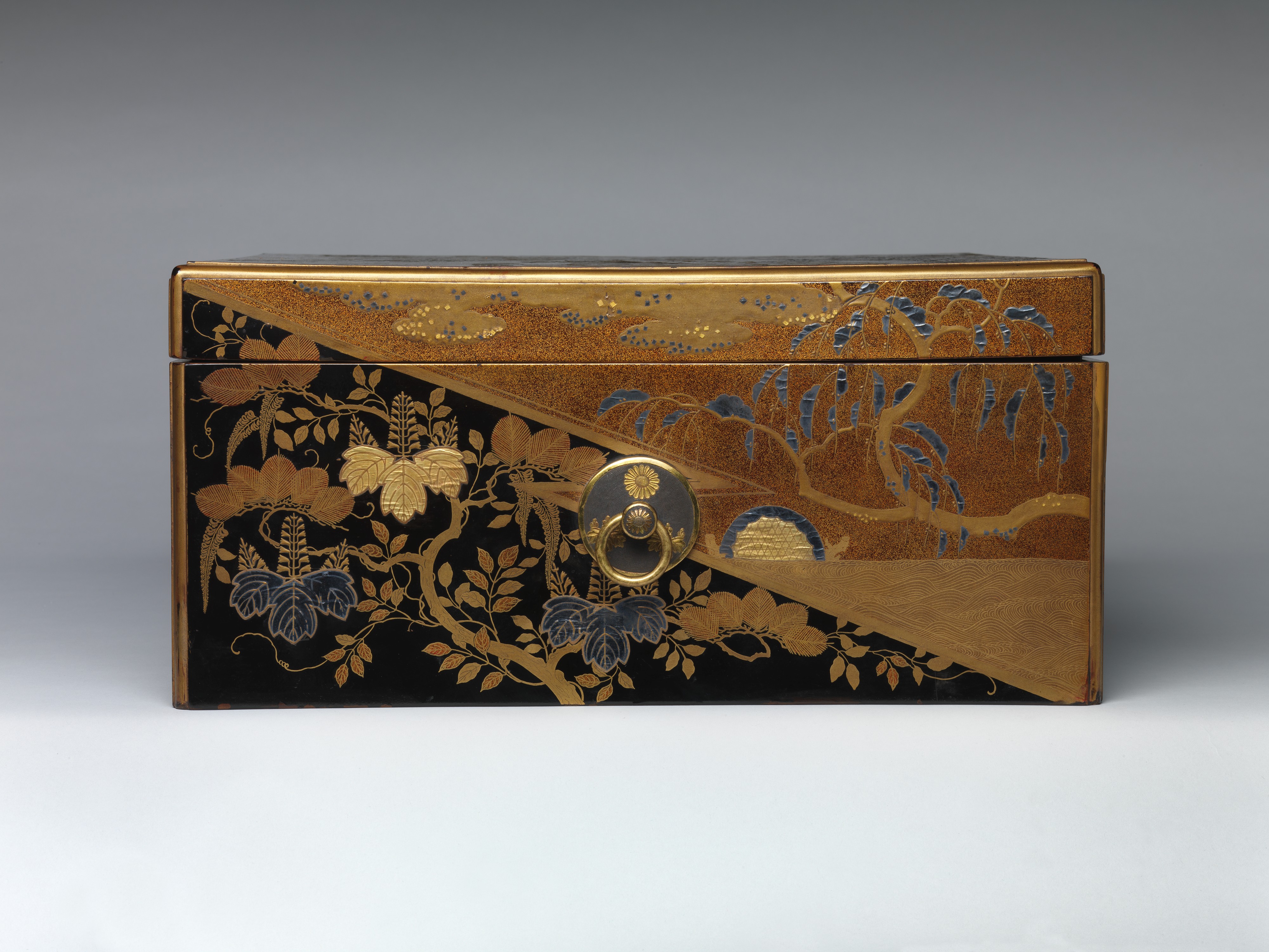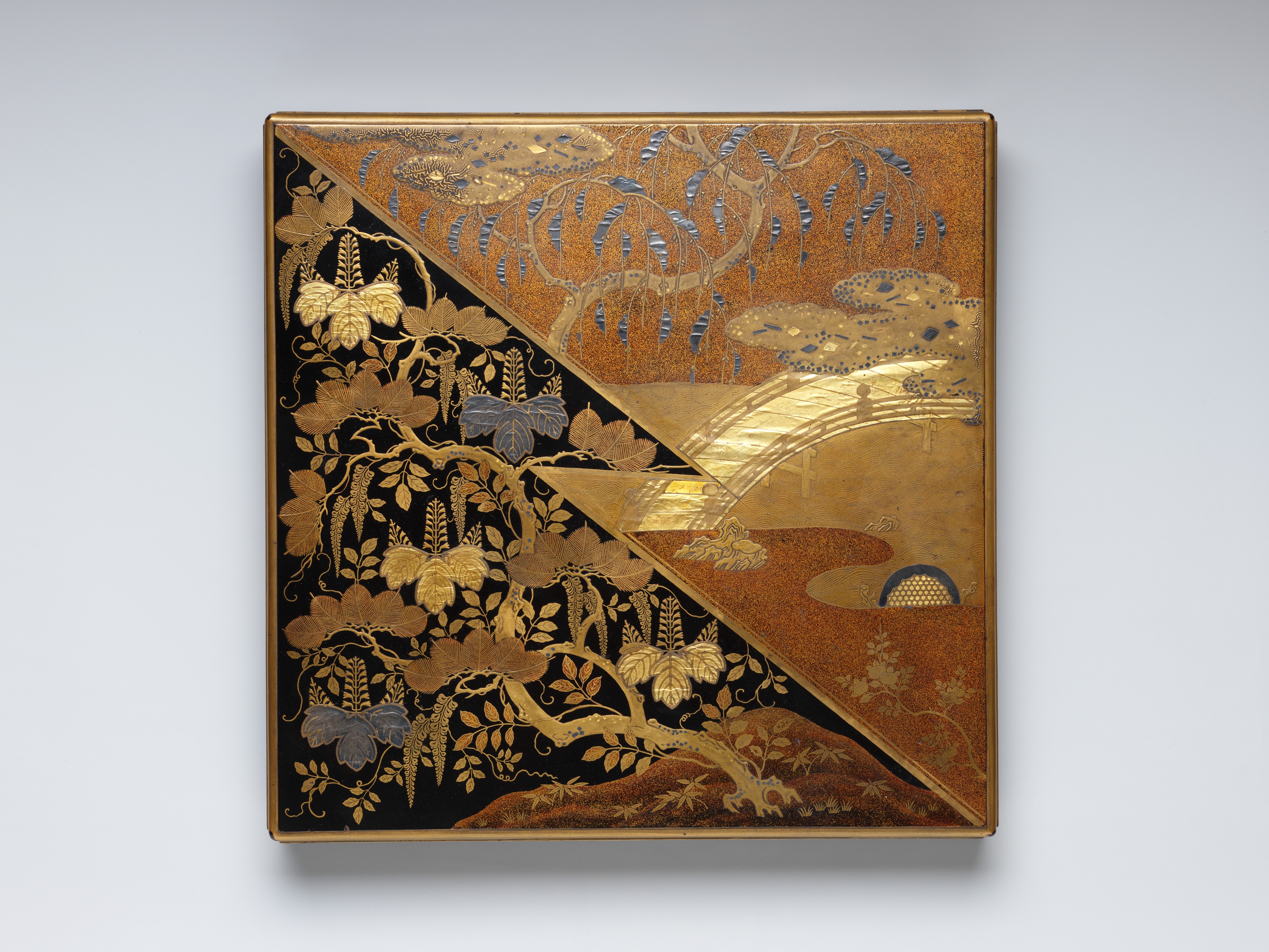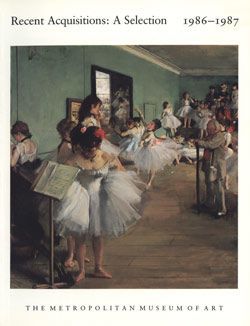Stationery Box in Kōdaiji style
Not on view
The bold combination of naturalistic landscape designs and scattered paulownia crests on contrasting diagonal fields divided by a zigzag border is characteristic of a distinctive style of Momoyama-period lacquer decoration known as Kōdaiji, which was current from the 1580s through the early seventeenth century. The style is associated with the military potentate Toyotomi Hideyoshi (1536–1598) and named for the Kōdaiji temple, where his memorial shrine was built in 1616. The shrine's lacquered interior, along with some thirty lacquer objects of personal use that are preserved there, are similarly decorated with naturalistic designs, mainly of autumn grasses, which are often combined with scattered paulownia crests, the personal emblem of the Toyotomi family. On this box the landscape motifs of a snow-covered willow by a bridge and a wisteria-wrapped pine tree are unusual, as is the use of gold-and-silver-foil inlay.
This image cannot be enlarged, viewed at full screen, or downloaded.
This artwork is meant to be viewed from right to left. Scroll left to view more.
